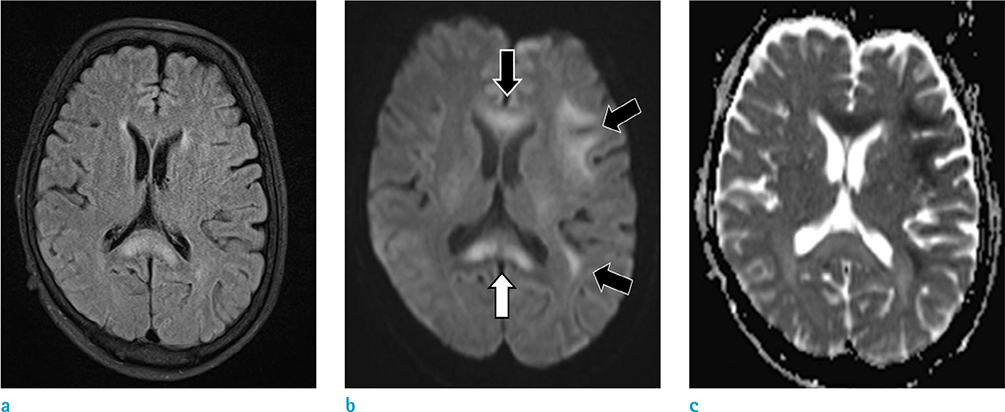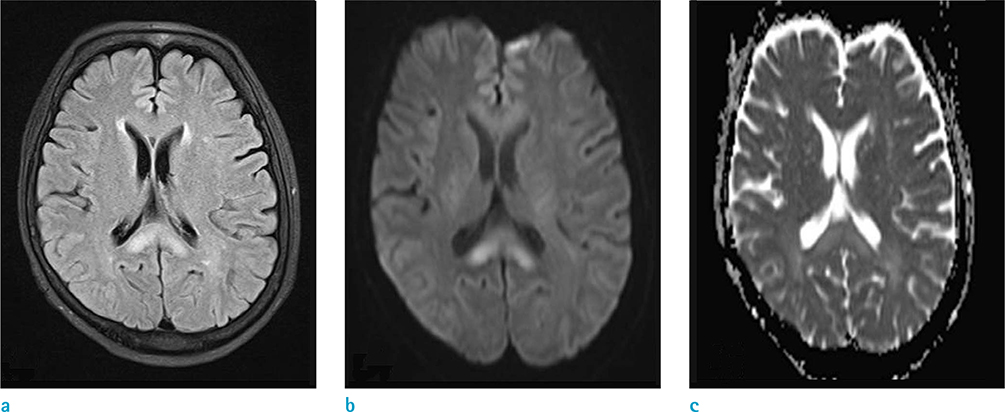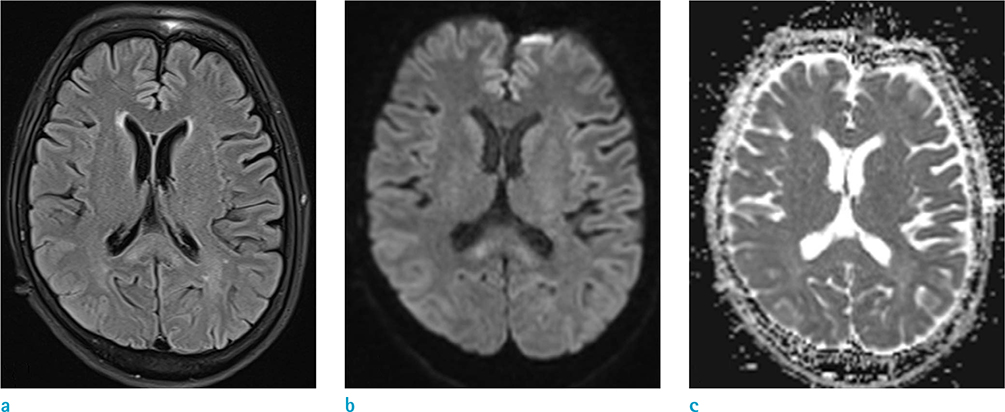Investig Magn Reson Imaging.
2018 Sep;22(3):200-203. 10.13104/imri.2018.22.3.200.
A Case of Metronidazole-Induced Encephalopathy: Atypical Involvement of the Brain on MRI
- Affiliations
-
- 1Department of Radiology, Hallym University Dongtan Sacred Heart Hospital, Hwaseong, Gyeonggi-do, Korea. csk1270@hallym.or.kr
- KMID: 2421554
- DOI: http://doi.org/10.13104/imri.2018.22.3.200
Abstract
- Metronidazole is an antimicrobial agent widely used for the treatment of anaerobic infection or antibiotics-associated diarrhea. It is generally thought to be safe, but can induce reversible toxic encephalopathy in the case of excessive or cumulative over-dose. Metronidazole-induced encephalopathy generally demonstrates the characteristic features of typical lesion location and bilaterality on magnetic resonance imaging (MRI). We report a case of metronidazole-induced encephalopathy with the involvement of asymmetric white matter. To our knowledge, only a few cases have been reported with respect to white matter lesion characteristics on MRI with diffusion-weighted images.
MeSH Terms
Figure
Reference
-
1. Bahn Y, Kim E, Park C, Park HC. Metronidazole induced encephalopathy in a patient with brain abscess. J Korean Neurosurg Soc. 2010; 48:301–304.
Article2. Kim E, Na DG, Kim EY, Kim JH, Son KR, Chang KH. MR imaging of metronidazole-induced encephalopathy: lesion distribution and diffusion-weighted imaging findings. AJNR Am J Neuroradiol. 2007; 28:1652–1658.
Article3. Park HS, Han DS. Management of antibiotics-associated diarrhea. Korean J Gastroenterol. 2009; 54:5–12.
Article4. Graves TD, Condon M, Loucaidou M, Perry RJ. Reversible metronidazole-induced cerebellar toxicity in a multiple transplant recipient. J Neurol Sci. 2009; 285:238–240.
Article5. Dow SW, LeCouteur RA, Poss ML, Beadleston D. Central nervous system toxicosis associated with metronidazole treatment of dogs: five cases (1984–1987). J Am Vet Med Assoc. 1989; 195:365–368.6. Olson EJ, Morales SC, McVey AS, Hayden DW. Putative metronidazole neurotoxicosis in a cat. Vet Pathol. 2005; 42:665–669.
Article7. Scharer K. Selective alterations of Purkinje cells in the dog after oral administration of high doses of nitroimidazole derivatives (author's transl). Verh Dtsch Ges Pathol. 1972; 56:407–410.8. von Rogulja P, Kovac W, Schmid H. Metronidazol encephalopathy in rats. Acta Neuropathol. 1973; 25:36–45.9. Ahmed A, Loes DJ, Bressler EL. Reversible magnetic resonance imaging findings in metronidazole-induced encephalopathy. Neurology. 1995; 45:588–589.
Article
- Full Text Links
- Actions
-
Cited
- CITED
-
- Close
- Share
- Similar articles
-
- Metronidazole Induced Encephalopathy in a Patient with Brain Abscess
- Reversible Encephalopathy Induced by Metronidazole
- Atypical Metronidazole-Induced Encephalopathy in Anaerobic Brain Abscess
- Two Cases of Metronidazole-induced Encephalopathy
- A case of metronidazole induced encephalopathy in a cirrhotic patient




